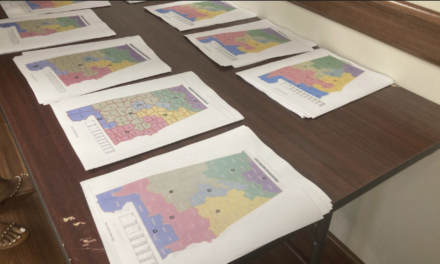(Trisha Powell Crain)
After five years of using letter grades on annual school and district report cards, Alabama’s top educator said it’s time for a review to make sure these are the best measures to use.
“We are pulling a task force together,” state superintendent Eric Mackey told state board members during Thursday’s work session in Montgomery. The 20-person group, which is still being formed, could have changes to recommend to the board by winter, he said.
But any changes the board approves for the report card would not go into effect until November 2026, he said, reflecting the 2025-26 school year measures.
Find your school’s 2023 A-F letter grade.
Supporters of report cards say parents are familiar with letter grades and it’s important to have a way to determine the quality of learning at a school. Opponents say letter grades aren’t a fair reflection of what’s happening in the school.
A superintendent from each of the state board districts has been asked to serve on the committee, and members of the state’s school board and superintendents’ association, along with the Alabama Education Association will be included on the task force, he added.
Report card measures – test scores, graduation rates, college and career readiness rates and chronic absenteeism – have stayed mostly the same since the first letter-grade report cards were issued in 2018. Each of those measures is weighted reflecting the priority placed on each measure.
Mackey said he wants to consider adding a measure showing how the lowest 25% of students have grown academically from one year to the next. “Most states have that,” he said.
The state could change the test for high school accountability from the ACT to something else, he said. “I’m not saying we would do away with the ACT or that we would not use it as the accountability test,” Mackey said, “but 70% of our superintendents have asked us to look at it.”
“There’s a push now for states to require computer science for high school,” Mackey said, and he wants the task force to consider that, too.
The law mandating letter-grade report cards was passed in 2012, and Mackey, head of the school superintendents’ association at the time, served on the original committee that decided which measures should be included.
The first report card with a letter grade wasn’t issued until 2018, the year Mackey became state superintendent. Report cards were not issued in 2020 or 2021 due to the pandemic’s disruption of state standardized testing.
In 2022, Alabama lawmakers split the report card into two – one for federal accountability and one for state accountability. Gov. Kay Ivey’s Commission on Teaching and Learning issued a report in December recommending the state revisit the A through F report card and to combine the state and federal report card into one report card.
Alabama schools earned a ‘B’ overall on the most recent report card, reflecting measures from the 2021-22 and 2022-23 school years.
The number of schools earning F’s has risen from 38 during the 2016-17 school year to 58 on the most recent report card for the 2022-23 school year. The number of ‘A’ schools has risen from 201 to 262 during the same time frame.
The distribution of grades for schools is reflected in the chart below. Click here if you are unable to see the chart.
ExcelInEd, a nonprofit organization that supports assigning letter grades to schools, shows 16 states as currently using the letter-grade system.
“I’m excited about it,” Mackey said, “and the people who have talked to me about it are very excited about it.”
Word of the task force has gotten out, he said. “Pretty much daily I’m getting requests from superintendents and principals asking if they can be on the task force.”











